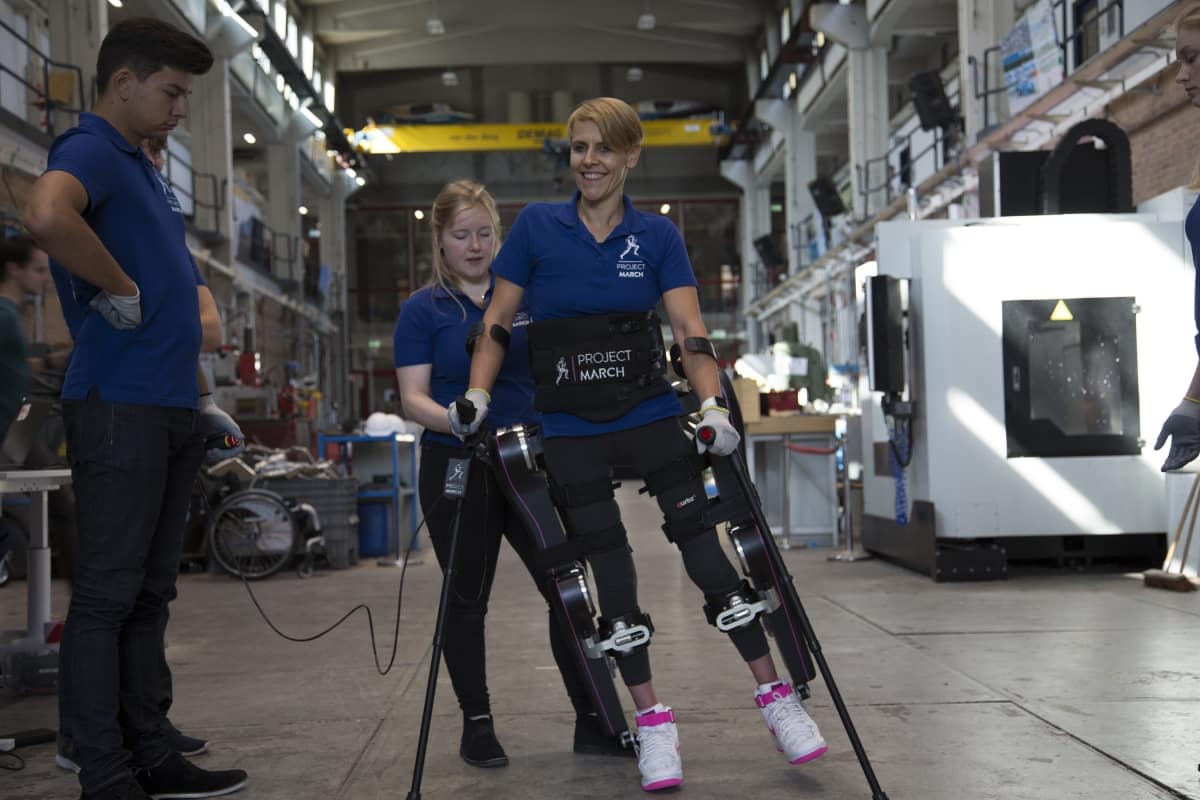
Exoskeletons are there to help people with partial paralysis walk. They are technological tours de force, but to date, they have only provided limited movement possibilities: forwards or backwards. A student team from Delft is changing this: with the fourth prototype of Project March, for the first time, a sideways movement of the hip is also possible, so that the spinal cord patient can also step aside.
Jorick Kamphof, Team Manager of Project MARCH, about the new hip joint: “To ensure that the exoskeleton can be used on a busy street, its movement possibilities still need to improve. The hip joint is an example of this. Our solution helps to move sideways, which, for example, can be useful when moving through a busy shopping street. This new hip could also help to make walking with the exoskeleton more stable and natural in the long run.”
Adjustments
The students have also worked on a system that makes it easier to optimise different walking patterns. Kamphof: “For example, if the user wants to make larger steps, this is now easy for us to implement. This makes it possible to respond to the personal wishes of the user. We have taken into account a design that is as simple as possible so that the parts can be replaced quickly and easily.” According to Kamphof, this will make it easier in the future for people with different physiques to walk in the same exoskeleton.
Translated with www.DeepL.com/Translator

